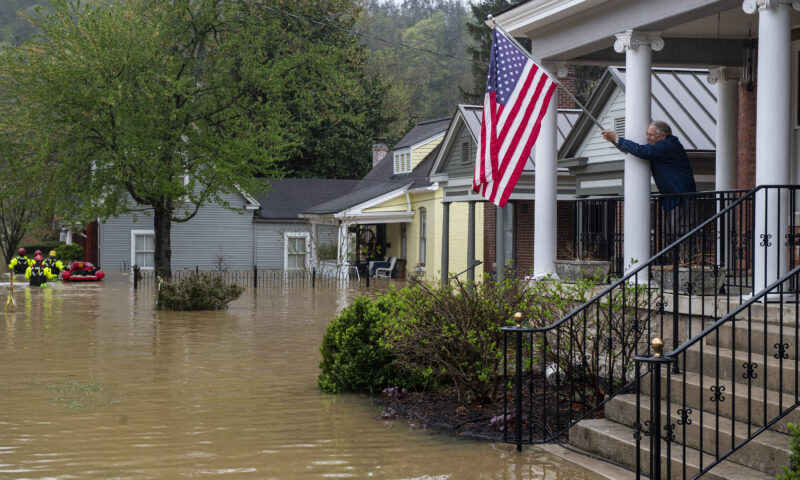After a pandemic-related pause of more than five years, the U.S. Department of Education has resumed debt collections on student loans in default, affecting more than 5 million borrowers.
When a federal student loan goes into default, the full balance becomes immediately due, and the government can garnish wages and seize federal payments to collect what’s owed.
Aisha Baruni, an attorney at Legal Services NYC who provides free legal assistance to low-income people, is preparing for an influx of clients concerned about navigating the complex student loan system.
“We’re going to see people lose their housing [or] not be able to pay for food and other essentials.”
~ Aisha Baruni, attorney
When the decision to restart collections was announced in April, Trump administration press secretary Karoline Leavitt summed up the administration’s perspective, declaring, “If you take out a loan, you have to pay it back. It’s very simple.” But according to Baruni, those most affected will be low-income people “who really cannot afford to pay,” she said. Dealing with the bureaucratic federal student loan system is anything but simple, she said, especially for those in default — borrowers who have not made a minimum loan payment in 270 days.
Though automatic wage garnishment hasn’t yet begun — it’s expected “later this summer,” per the Trump administration — Baruni is already seeing clients worried about navigating debt collections. She and other advocates warn that restarting collections will push low-income borrowers into a confusing, punitive loan system that could deepen their financial hardship.
One of Baruni’s clients, a New York man in his 70s who previously had his wages garnished because of a $10,000 student loan he took out in the 1980s, thought his debt was long settled. He had already paid $34,000 on the loan and hadn’t received any correspondence from the government in years.
But according to a notice he received in June, he still owes $8,000, and the government is ready to collect.
Baruni’s client has reason for concern even beyond the price tag: previously, a decade of forced collections on his student loan led to him losing his apartment and becoming homeless.
“I expect we’ll see similar situations,” Baruni said. “We’re going to see people lose their housing [or] not be able to pay for food and other essentials.”
Nearly half of borrowers in default never earned a college degree. Instead, they’re still paying for an education that didn’t lead to a credential.
People in default will also see hits to their credit scores, which can limit access to housing, other loans and jobs. In addition, defaulting on student loans in some states can even lead to the loss of professional licenses for a wide range of workers, from nurses to hairdressers.
Defaulting on student loan debt “is so destructive to people’s lives and their financial wellbeing,” said Kyra Taylor, a staff attorney at the National Consumer Law Center. The debt “keeps people in poverty when they thought their education would be a pathway to a brighter financial future.”
Nearly half of borrowers in default never earned a college degree. Instead, they’re still paying for an education that didn’t lead to a credential. Without the earnings boost that often comes with a degree, repaying loans becomes even harder — especially for borrowers who were already in financially precarious situations. Many borrowers in default who left school before finishing cite the cost of attendance as a key reason they dropped out, according to a Pew survey.
“It becomes a situation where in order to pay back your loan, you need to make more money — and in order to make more money, you need to finish a degree,” said Michele Zampini, senior director of college affordability at the Institute for College Access and Success. “But you are trapped in this cycle with the default on your record.”
The Long Arm of Collections
The federal government, which restarted collections efforts in early May, has significant, expansive authority to collect defaulted student debt: It can garnish wages as well as tax refunds, federal pensions, Social Security and other federal payments.
A Trump administration official said in June that the federal government would not begin garnishing Social Security benefits as originally planned, but that’s little comfort to Baruni and her clients. While an administration representative spoke with reporters about the government’s change of heart, there was no accompanying press release or official policy guidance. In other words, the federal government still has the power to garnish Social Security payments whenever it chooses to do so, Baruni explained.
“With no timeframe and no official information about it, [the administration hasn’t given] any certainty to help people plan,” Baruni said.
Many borrowers will discover they’re in default only when garnishment begins.
Capital & Main reached out to the Department of Education, which is responsible for student loans, and the Social Security Administration, but received no response.
Baruni’s client, who is still paying back his $10,000 loan, receives less than $1,500 each month in Social Security retirement benefits. As long as his loan remains in default, the government can legally garnish up to 15% of his benefits.
While borrowers can prevent garnishment by making a minimum payment, many borrowers will discover they’re in default only when garnishment begins. Another of Baruni’s clients, a New York woman who went to college in the early 1980s, discovered she had student loan debt only when she received a collections notice this spring.
It was the first notice she had received in 40 years about the loan — a debt she hadn’t known existed. She thought her financial aid was made up entirely of grants.
But after four decades, the “zombie” debt, as Baruni called it, has come back to haunt her. Baruni said her client should be eligible for discharge of the loan due to disability, but until then, the client is worried that the government will garnish her monthly $1,300 Social Security disability payment in order to pay back the loan.
A “Byzantine System”
Student loan debt is “a fairly unique form of consumer debt, in that it’s very, very difficult to get out of it,” said Zampini. And student loan default “is extremely punitive for borrowers, and the consequences are severe and long lasting.”
Federal student loans operate within a two-tier system, she explained, with different systems for borrowers in the traditional repayment process and borrowers who are in default. Once a borrower goes into default, they’re “kicked into an entirely different … notoriously byzantine system” without much customer support, she said.
Though there are ways to navigate and ultimately exit the bureaucratic labyrinth, it can be difficult for low-income borrowers, who may be in low-wage jobs or have caregiving obligations that leave little time to negotiate with collection agencies. Often, lawyers like Baruni are necessary to assist borrowers with their cases.
One important bright spot Baruni shares with her clients: Many borrowers are eligible for affordable student loan payment plans, with minimum monthly payments based on income. Sometimes, a minimum monthly payment can be as low as $0. “The first line of defense is always income-driven repayment,” Taylor of the National Consumer Law Center said.
But unfortunately, eligibility for affordable repayment plans means little if a borrower lacks “the knowledge and the guidance to jump through administrative hurdles,” said Baruni.
And once a borrower defaults on a loan, accessing those affordable repayment plans becomes much more difficult. Resolving the default often involves even more bureaucratic hurdles, as well as added collection fees, which push monthly payments above the original amount, Zampini said.
Baruni emphasized that the cost of garnishment will be felt beyond the dollar amounts.
“It is not an overstatement to say that people are going to lose their homes [and] go without their medication” in order to pay their debt, she said.


 Column - State of InequalityNovember 28, 2025
Column - State of InequalityNovember 28, 2025
 Latest NewsDecember 8, 2025
Latest NewsDecember 8, 2025
 Striking BackDecember 4, 2025
Striking BackDecember 4, 2025
 Latest NewsNovember 26, 2025
Latest NewsNovember 26, 2025
 The SlickDecember 2, 2025
The SlickDecember 2, 2025
 Latest NewsDecember 1, 2025
Latest NewsDecember 1, 2025
 Dirty MoneyDecember 3, 2025
Dirty MoneyDecember 3, 2025
 Child FarmworkersDecember 5, 2025
Child FarmworkersDecember 5, 2025

